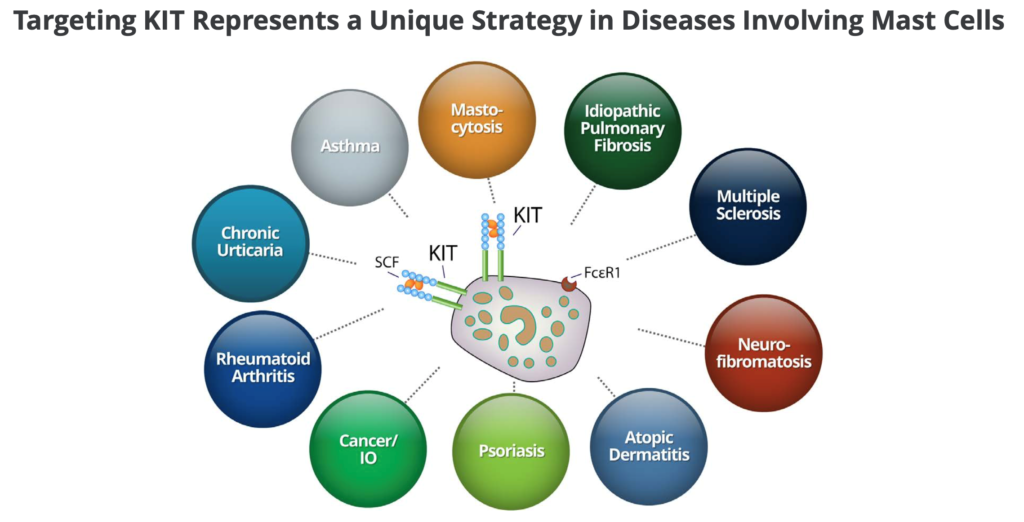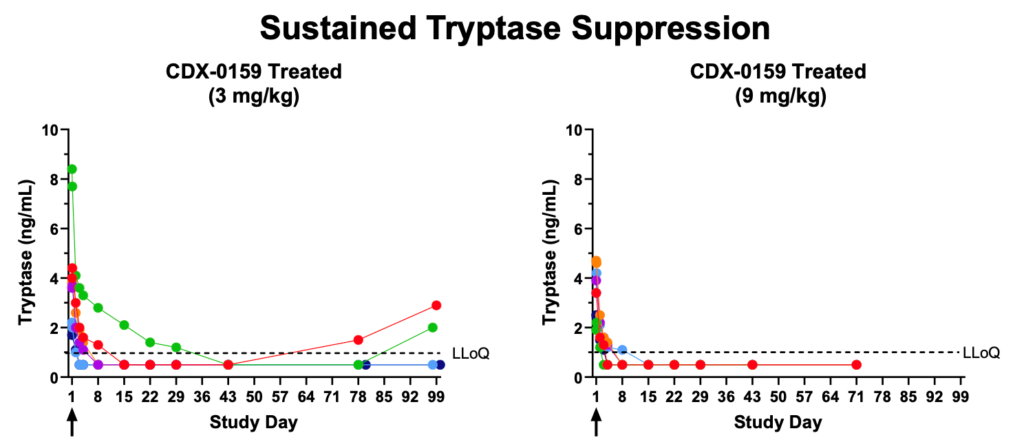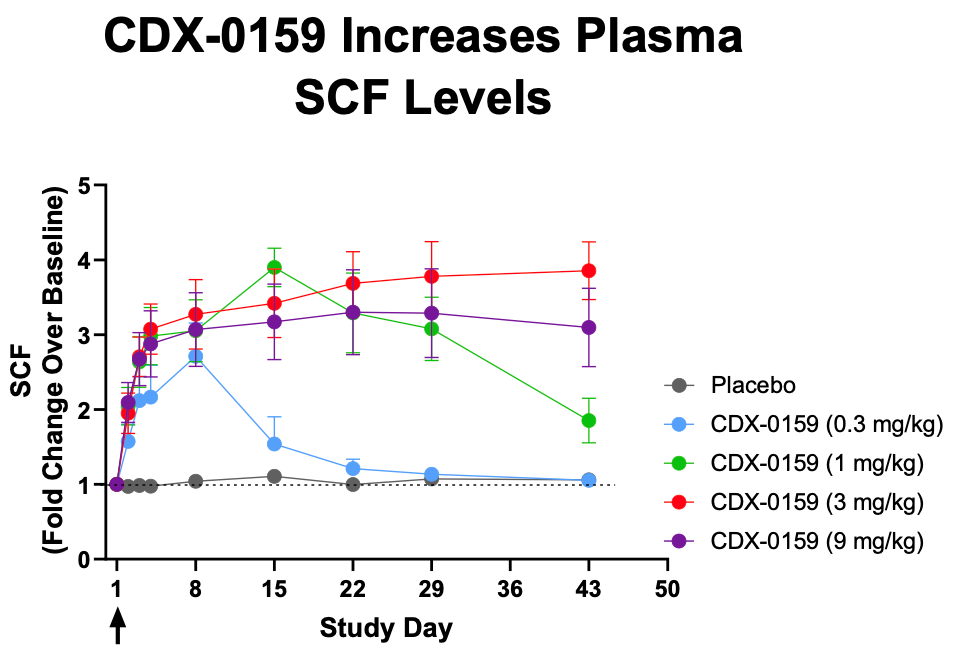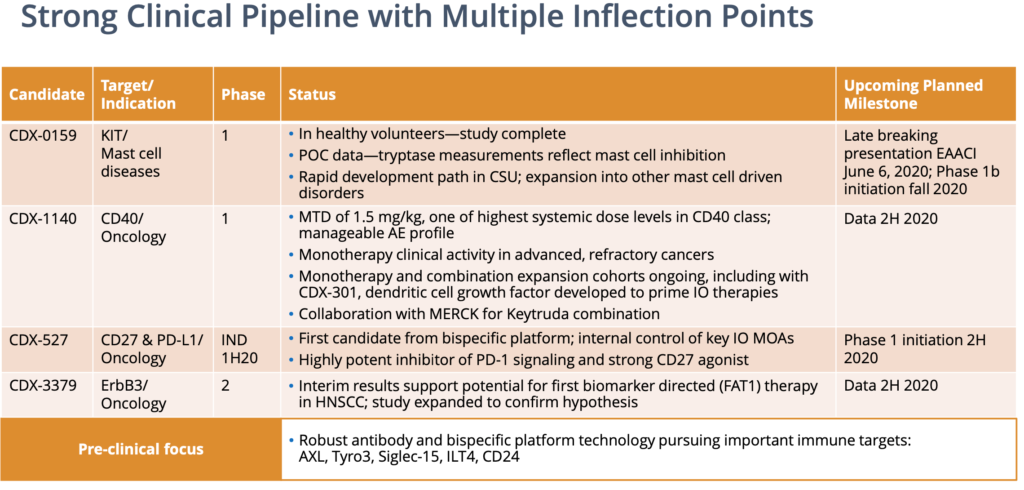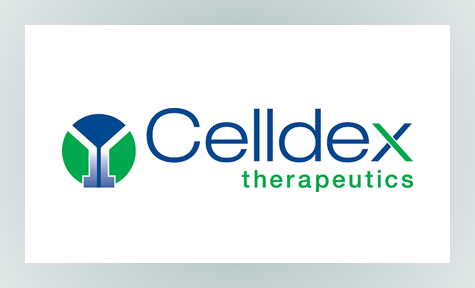
July 30, 2020
BIOINVEST NEWS: Celldex (CLDX)
CDX-0159 – The Mast Cell Warrior
We are initiating coverage of Celldex Therapeutics (CLDX, $12) with a BUY under $15 and a $30 TARGET PRICE. In our view, CDX-0159, the Company’s anti-C-KIT antibody has blockbuster potential in various mast cell diseases. With a market cap of ~$375 million with ~$200 million in cash, in our view, CLDX is extremely undervalued based on the potential of CDX—0159 alone. Moreover, when compared with ALLK (~$4 billion market cap), which is another mast cell targeted company. After releasing highly positive initial clinical data resulting in significant mast cell depletion and a clean safety profile, further updates and multiple trial initiations are due this Fall. These clinical trials are relatively quick to perform as trials go and data are released. Lastly, as a wholly-owned asset, we believe CLDX has also become an attractive potential takeover candidate. As a result, we think CLDX’s market cap will approach that of ALLK’s. BUY.
CDX-0159 – A Potent KIT Inhibitor
CDX-0159 is a humanized monoclonal antibody that specifically binds the receptor tyrosine kinase KIT (also called stem cell factor or SCF) with high specificity and potently inhibits its activity. KIT is expressed in a variety of cells, including mast cells, which mediate inflammatory responses such as hypersensitivity and allergic reactions. KIT signaling controls the differentiation, tissue recruitment, survival and activity of mast cells. In certain inflammatory and allergic diseases, such as chronic urticaria, mast cell activation plays a central role in the onset and progression of the disease. KIT inhibition is involved in the potential treatment of various multi-billion acute and chronic conditions (see Exhibit 1).
Exhibit 1 – Mast Cell Diseases
EAACI 2020 – Initial Mast Cell Data Impresses
The clinical event that propelled Celldex onto investors’ radar screens was the late-breaker presentation of CDX-0159 at the European Academy of Allergy and Clinical Immunology (EAACI) Annual Congress 2020 (Held digitally; June 6-8). In 32 healthy volunteers treated at 3 doses (n=6 x3, and placebo=8)], CDX-0159 demonstrated impressive pharmacokinetics resulting in sustained dose-dependent reductions in plasma tryptase and a favorable safety profile. The reduction in plasma tryptase was observed for >2 months at the single 3 and 9 mg/kg doses. The data were presented by Dr. Marcus Maurer, a leading medical expert in urticaria and Professor of Dermatology and Allergy and Director of Research at the Allergie-Centrum-Charité of the Charité-Universitätsmedizin in Berlin. Dr. Maurer is also head of the Specialty Clinics for Urticaria, Mastocytosis, Pruritus and Angioedema and the Dermatological Allergology. The link to the poster presentation is here: https://www.celldex.com/docs/CDX-0159%20EAACI%202020.pdf.
Tryptase is a protease released specifically by mast cells (MC), and its plasma level is proportional to systemic mast cell load. A single dose of CDX-0159 suppressed plasma tryptase levels in a dose-dependent manner, indicative of systemic MC suppression. Durable tryptase suppression was observed at the 3 and 9 mg/kg doses to Day 71. Reductions below 1 ng/mL (LLoQ) were observed in 3/4 volunteers at Day 71-78 and 2/4 volunteers at days 98-99 at 3 mg/kg. Reductions below LLoQalso were observed in all (4/4) volunteers at Day 71 at 9 mg/kg (see above). An additional tryptase analysis at Day ~130 for cohorts 3 and 4 is planned and based upon the June cutoff may occur sometime late summer.
In addition to tryptase, mast cell activation is induced by a few other mechanisms, including IgE-, complement-, and stem cell factor (SCF)-mediated pathways. In the same study at the 3 mg/kg and 9 mg/kg doses, for example, CDX-0159 significantly raised plasma SCF levels by 3-4 times over baseline, providing further evidence of MC inhibition (see below).
Clean Safety
CDX-0159 was well tolerated at all dose levels. Thirteen (54%) subjects treated with CDX-0159 experienced Grade 1 (mild) infusion-related reactions, which included hives and/or erythema with some itching. The Grade 1 reactions spontaneously resolved without intervention during infusion or up to 180 minutes after completion of the infusion. Mild and asymptomatic decreases in hematologic parameters (white blood cells, neutrophils) appeared to occur more frequently in subjects treated with CDX-0159 than placebo. Most importantly, there were no notable differences observed in chemistry analytics or RBC, platelets or hematocrit levels.
Clinical Programs Begin In Urticaria
Celldex plans to initiate Phase Ib studies in chronic urticaria this Fall, likely starting in September or October. Urticaria (hives) are red, itchy welts that result from a skin reaction. The welts vary in size and appear and fade repeatedly as the reaction runs its course. The condition is considered chronic hives if the welts appear for more than six weeks and recur frequently over months or years – leading to chronic spontaneous urticaria (CSU). There is also a more difficult to treat subset of chronic urticaria – chronic inducible urticaria (CINDU) which is defined as hives that are present for at least or greater than 6 weeks and for most days of the week. Physical urticaria is present only when certain physical stimuli are applied. These hives are intermittent and technically are not chronic. Current treatments for CU and CSU include Roche’s Xolair and Novartis’ ligelizumab, both antibodies to IgE. However, not all patients respond to these treatments.
A recent clinician presentation suggests there is an unmet need in 20-40% of CSU and CINDU patients, respectively. This market alone could include 1 million CSU patients in the U.S./EU and 1.3 million CINDU patients in the U.S./EU. The mechanism and rationale behind CDX-0159 is ideal for this patient population. In addition, there are various indications outside of CSU/CINDU in which mast cells could play a role and for which CDX-0159 could potentially be evaluated (see Exhibit 1 above). The same clinician indicated that most CSU studies are compared with placebo and that is fine to prove safety and efficacy. However, if one tests their compound against an active comparator (e.g., Xolair), then one must also have a strong conviction in its ability to show superiority (or at least equivalence). In fact, we are under the impression that CLDX will be using an active comparator in the Phase Ib CDX-0159 studies in CSU.
CDX-0159 and AK-002
In 2019, Allakos (ALLK) successfully completed a Phase I/II trial of AK002, a monoclonal antibody to Siglec-8, in Xolair naive chronic urticaria. patients, which demonstrated a benefit on the primary (UCT scale) and secondary efficacy endpoints (UAS7) and that the drug was generally well tolerated. The mechanism of action of AK002 differs from CDX-159 as it has multi-model activity for both mast cells and eosinophils. The main difference is that the ALLK compound reduces mast cells and mast cell activation by roughly 20%, while the CLDX compound is way more potent in blocking MCs – the EAACI data above shows that it almost completely depletes mast cells. Specifically, CSU is a mast cell disease and there is a very high probably that CDX-159 will be successful. Consensus models of AK002 currently show peak CSU sales at $1.8 billion. When the positive AK002 in CSU data alone, ALLK’s valuation rose to approximately $2 billion. With further mast cell diseases and in AK002’s case eosinophil conditions as well, ALLK’s market capital is now over $4 billion. We expect that CLDX will perform a list of clinical studies in several of the mast cell conditions listed above. In our view, the CSU studies will be ready by Q1:21. Upon a positive outcome, we believe the market will begin to value CLDX on not just CSU but also discount success in some of the other MC indications as well.
Strong Cash Position As EAACI Data Attracts Top-Tier Institutions
Since the initial mast cell data of CDX-0159 was presented in June, CLDX raised $150 million in a follow-on offering and now has about $200 million in cash and no debt. The cash is sufficient to fund currently planned operations through 2023. Before the data/deal, only 11% of the stock was owned by institutions. That has changed dramatically as the secondary has brought in the most sophisticated and dedicated biotech investors. RTW Investment now owns 10% of the company, Ikarian Capital 7%, Biotech Value Fund (BVF) owns 4% and more recently, Adage Capital acquired 5%. 25% of CLDX stock is now owned by four top funds. (Funds are only required to disclosed >5% positions, so we believe other Blue Chip Biotech investors are establishing CLDX positions, too.)
Celldex Background
Celldex is a development-stage biotechnology company focused on targeted antibody therapeutics to address devastating diseases. CLDX was spun out of antibody leader Medarex (acquired by BMS and the source of blockbusters Yervoy® and Opdivo®). The Company’s R&D pipeline is based on oncology and mast cell related diseases with near-term data catalysts. CLDX has what we believe is a best-in-class mast cell inhibitor, CDX-0159; based on late-breaking data presented at EAACI in June 2020 and a novel CD40 agonist (CDX-1140) In fact, a Phase I/II clinical trial was just posted and is starting right now in combination with a FLT3 ligand, CDX-1140 and radiotherapy for the treatment of lung cancer (https://clinicaltrials.gov/ct2/show/NCT04491084?term=immunogen). The Company’s proprietary platform delivers a steady preclinical MAb catalog with in-house manufacturing that can lead to a new IND every year – CDX-527(CD27/PD-L1BsAb). The Company has existing partnerships with Merck, BMS/Medarex, Rockefeller University, University of Southampton and Amgen providing technology validation.
Conclusion – CDX-0159, Catalysts and Wholly-Owned
We are initiating coverage of CLDX with a BUY UNDER 15 and a TARGET PRICE of 30 based on the early clinical results and commercial potential of CDX-0159 in mast cell conditions. With multiple clinical catalysts due beginning in H2:20 plus what we believe is an easy value comparison with Allakos (ALLK ~$3.7 billion market cap or 10x that of CLDX), in our view Celldex ($370 million market cap) is extremely undervalued. Several new top-tier biotech investors seem to agree. Lastly, with CDX-0159 as a wholly-owned asset, we also think that CLDX is an attractive takeover candidate.
Portfolio Transactions: The Model and Trader’s Portfolios will both purchase $175K of CLDX on Monday.

